NOW?
The work was developed during the symposia "Bagdad in Love" in 2007, after interviewing some artists from Iraq about their childhood memory. It is an attempt in investigating, whether an image or object can actually show or express complex political and social connections.
1001 drawings of things that don´t exist anymore
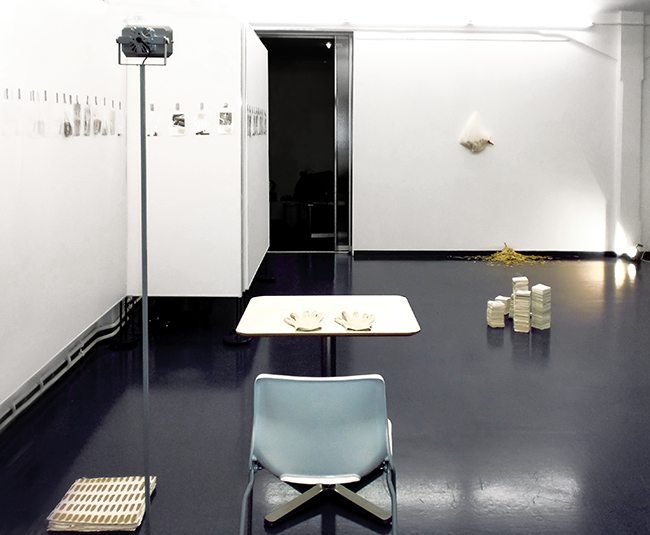
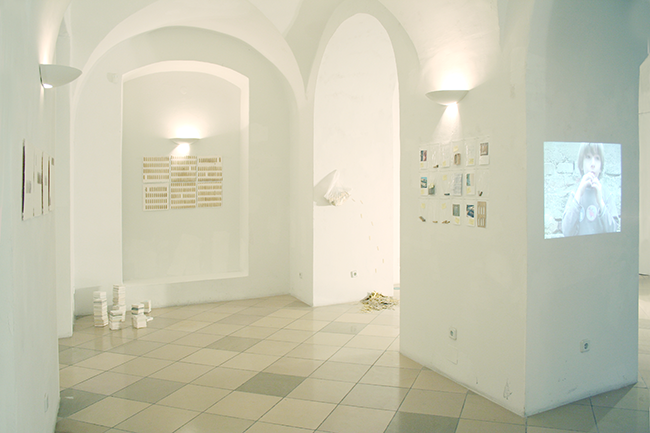
Karoline RIha / Melody / A / 2007 / 4:3 stereo / 03:18
(composition tor gun cartridges)
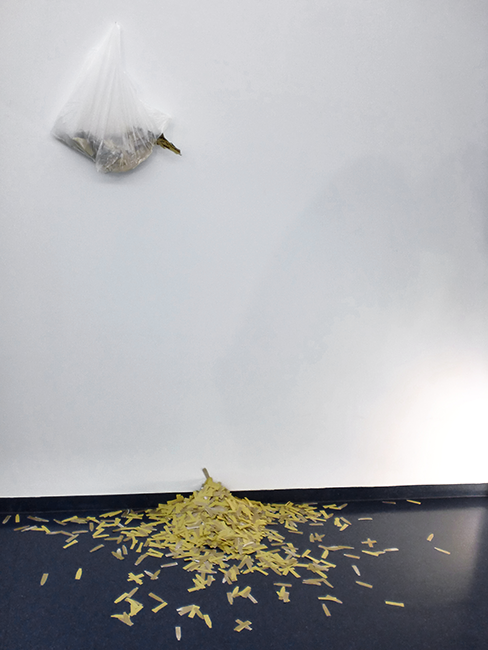
My daily shopping / 5700 pressed paper gun cartridges
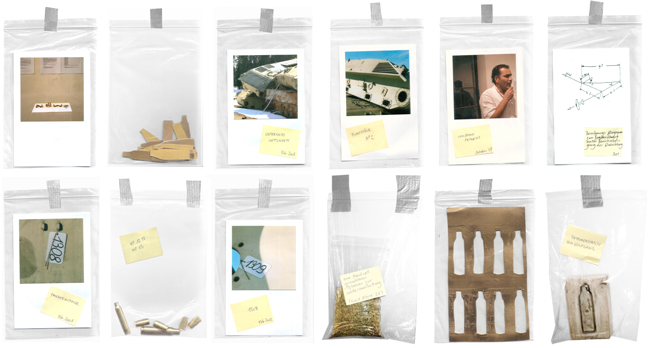
Little Archive
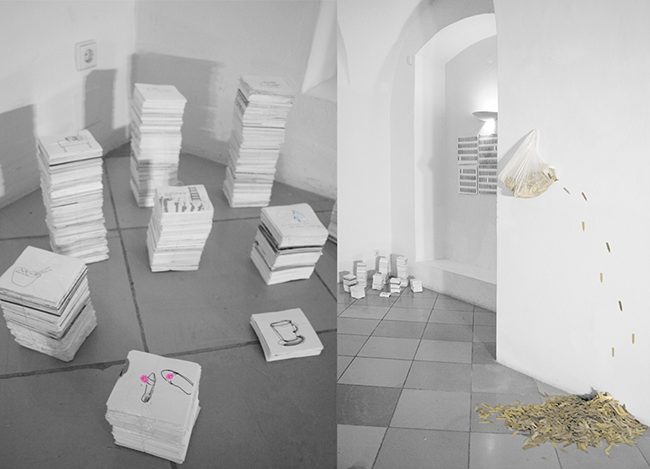

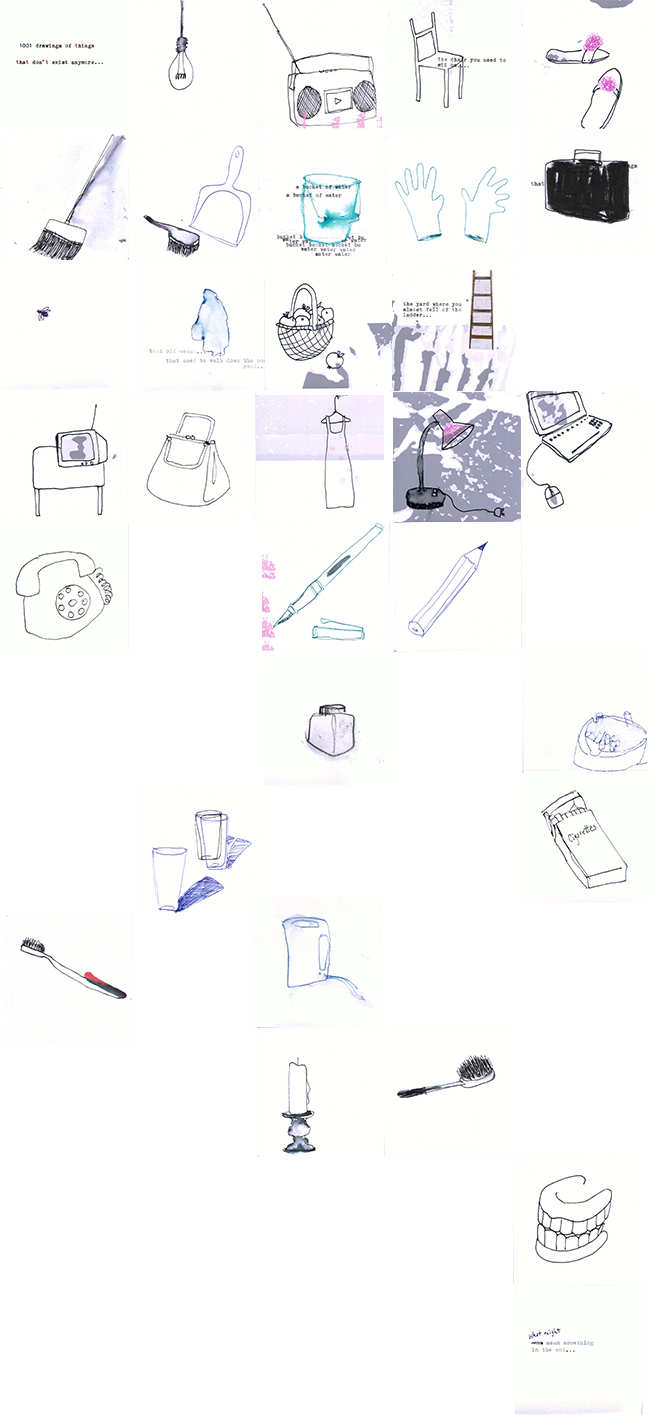
Karoline Riha / 1001 drawings of things that don´t exist anymore (some of the drawings)
Über den Krieg zu sprechen impliziert stets auch eine Auseinandersetzung mit medialen Bildern, mit denen wir uns permanent konfrontiert sehen. Bilder die egal wie schockierend, doch Aufklärung suggerieren.
Wie reagieren wir auf solche Bilder? Wenden wir den Blick ab und verdrängen sie sowohl aus dem Blickfeld, sowie aus dem Gedächtnis oder nehmen wir sie hin, als Teil der schrecklichen Weltzustände, kommentiert mit einem "Wie furchtbar"- und im nächsten Augenblick wieder vergessen?
Was kann ein Bild über Bagdad aussagen?
Wie groß ist der räumliche und kulturelle Unterschied zwischen Wien und Bagdad?
Können wir ein Bild aus dem Irak "wirklich" lesen?
Wo beginnt man die Lücke zwischen Bild und Betrachter zu überbrücken?
Ist das Bild eine Metapher und wie kann sie als solche sichtbar gemacht werden?
Wäre es eher so, dass nicht die Wirklichkeit anhand der Bilder näher gebracht, sondern anhand der Bilder kreiert wird?
Wie spricht man über Krieg in Bildern, ohne jene zu verwenden, die wir zu gut aus den Medien kennen?
Wie spricht man über solche Orte die an Schwindsucht leiden, geprägt vom Verschwinden, Entschwinden, ohne in Nostalgie zu verfallen, oder den westlichen Blick auf Orientalismus – Wunschträume aus 1001 Nacht?
Wie spricht man über Dinge, des Unsprechlichen in Bildern, ohne jene des Schocks, die in all ihrer Grausamkeit abstrakte Metaphern eigenen Leides werden, den eigentlichen Ort des Geschehens entfremdend und uns trotz allem nicht mehr wirklich schockieren.
Wie kann man etwas über Krieg sagen, was nicht schon tausendmal gesagt worden wäre - gehört und ungehört?
To talk about war also implies to talk about media images, with which we see ourselves permanently confronted. Images, no matter how shocking nevertheless suggest elucidation.
How do we react upon such images? Do we turn our gaze, surpressing them out of sight and mind, or do we accept them as part of the terrible circumstances of our world, commented with "how terrible" and already forgotten over the next cup of tea?
What might an image of Bagdad tell us?
How big is the spatial and cultural distance between Vienna and Bagdad?
Can we truly read a picture of Iraq?
Where do we start bridging the gap between picture and viewer?
Is the image a metapher and how can it be made visible as such?
Wouldn´t it be more likely that reality is less represented, than created within the image?
How do we talk about war through images without useing those that we are too familiar with through media?
How do we talk about such spaces, that suffer of consumption, surrounded by an aura of disappearance and vanishment, without falling into nostalgia, western views on orientalismn - wishful dreams of arabian nights?
How do we talk about the Unspeakable in images, without those of shock, that despite all their cruelty become mere metaphers of ones own suffering, distancing the place of happening, and despited everything not shocking anymore.
How to say something about war, that hasn´t been said a million times before - heard or unheard?
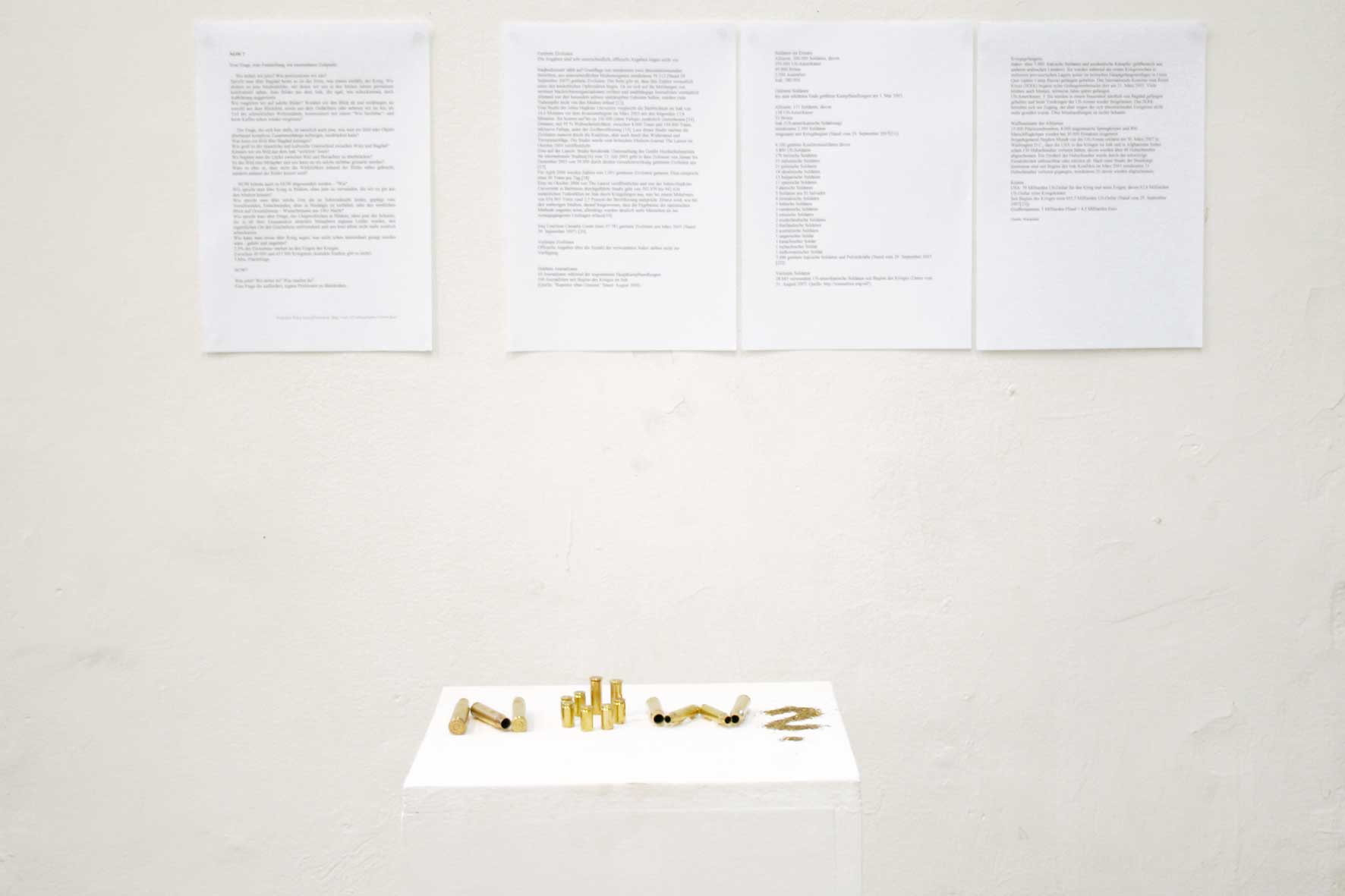
Karoline RIha / Now / Statistics of war @ Bagdad in Love show 2007
